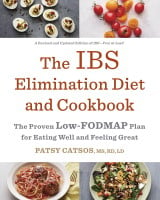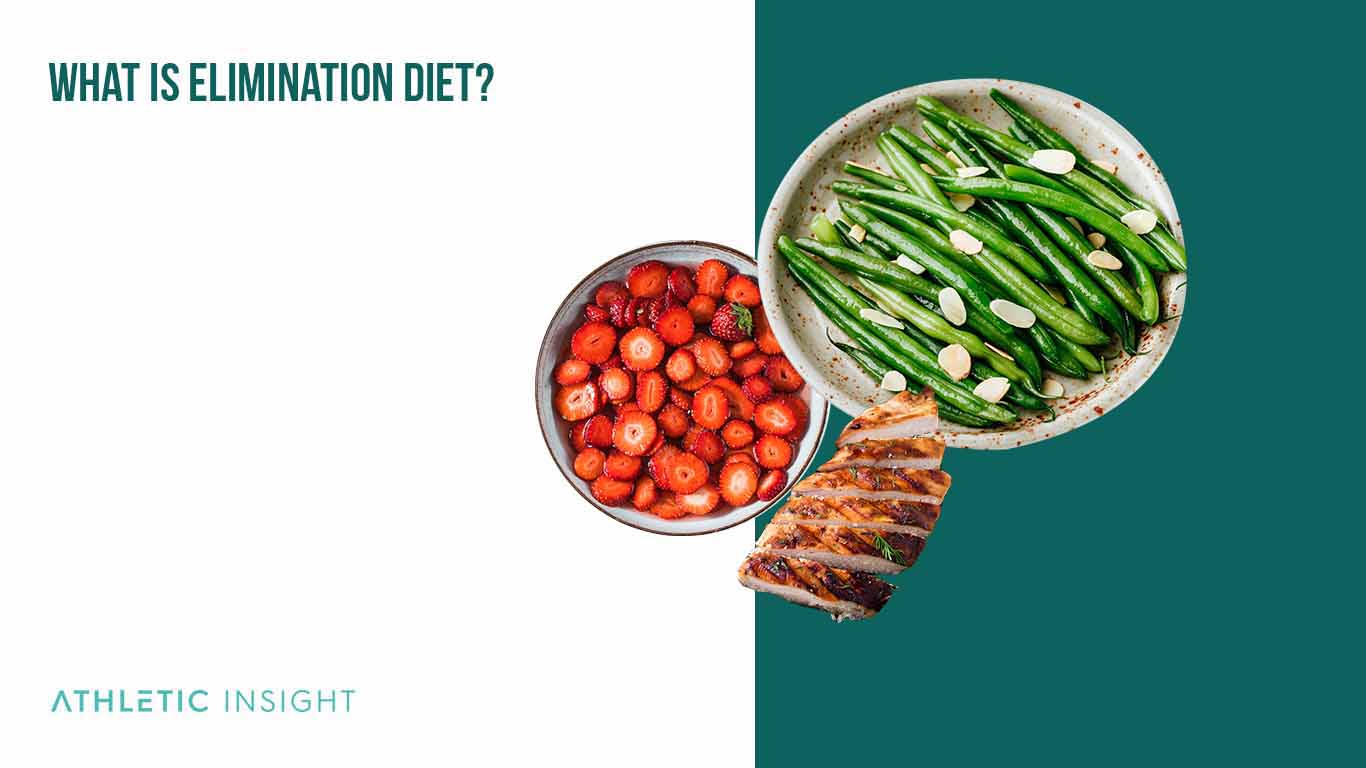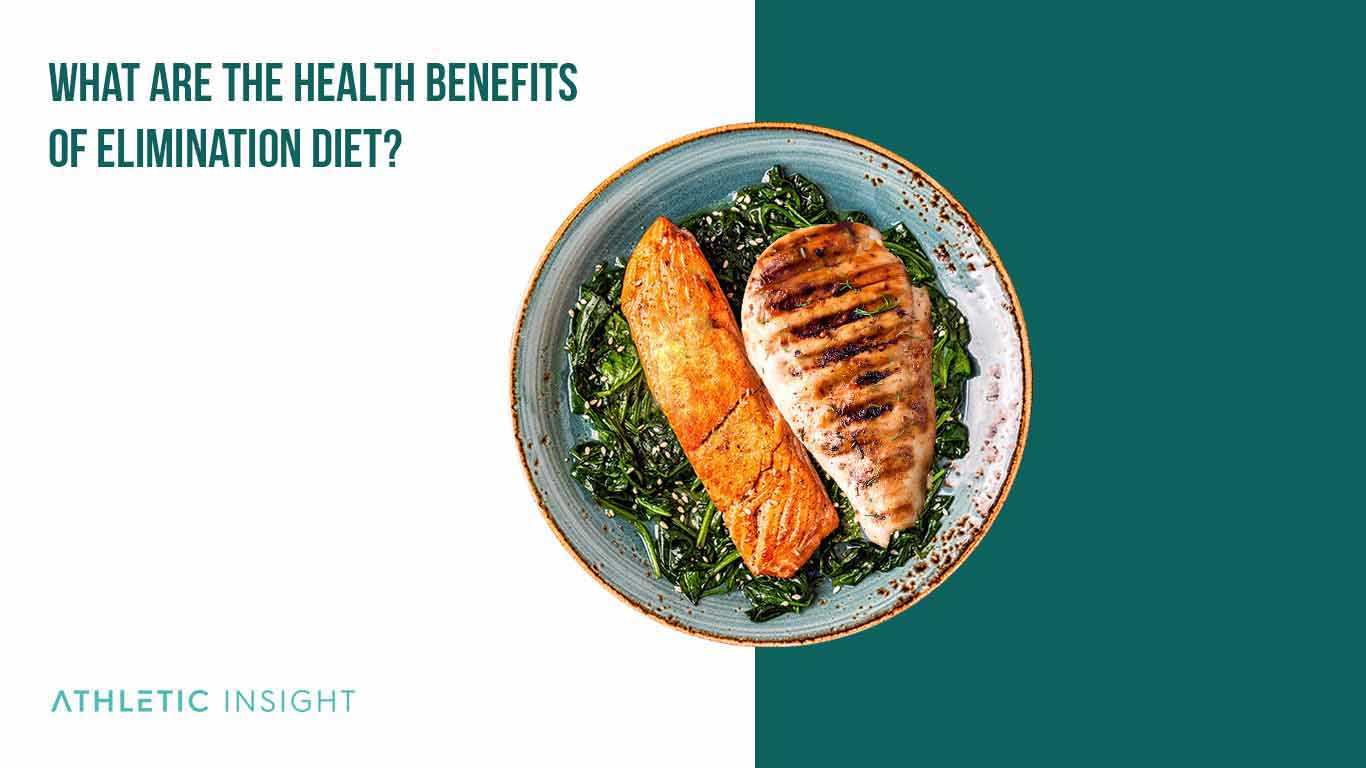The elimination diet is an approach to detect food sensitivities and allergies. The elimination diet is vital because it can help uncover hidden health issues such as digestive distress or inflammation caused by specific ingredients.
The elimination diet works by temporarily removing certain foods from your diet, monitoring how you feel, and then reintroducing them one at a time to observe any reactions. Benefits of the elimination diet include reduced inflammation in the gut and associated chronic pain, improved energy levels, and clearing skin blemishes.
The elimination diet is not suitable for everyone. Those with severe allergies and children shouldn’t try the elimination diet unless directed by a doctor. People with gastrointestinal issues and suspicions of food allergies should try this diet.
Elimination Diet

IBS Elimination

Best Recipes

The most popular elimination diet types are the gluten-free diet, the Whole30 diet, and the low FODMAP diet.
- Gluten Free: The gluten-free diet can last indefinitely and eliminates all foods that contain gluten.
- Whole30: The Whole30 diet lasts 30 days and eliminates problematic food groups like dairy and sugar until after this period.
- Low FODMAP: The low FODMAP diet lasts two to six weeks and removes foods that fall under the category of fermentable oligosaccharides, disaccharides, monosaccharides, and polyols.
What Is the Elimination Diet?
An elimination diet is a procedure used for diagnostic purposes to identify problematic foods that a person cannot eat without unpleasant side effects. These adverse effects occur because of food intolerances or allergies. The elimination diet encourages the gradual reintroduction of these foods in an attempt to determine the specific ingredients that are causing health problems.

The elimination diet typically lasts for five to six weeks. During this time, the person undergoing this diet plan will be able to learn how certain foods impact their body and identify which foods are causing allergies, discomfort or digestive issues.
How Does the Elimination Diet Work?
The elimination diet works by aiding a doctor in identifying foods that lead to gastrointestinal distress by eliminating those items from someone’s diet.
After the individual removes a food, the inflammation in the immune system and gut reduces, fixing the inflammatory responses caused by specific trigger foods.
Since highly refined carbs and sugars such as pasta and bread are removed through the elimination diet, some people can start experiencing withdrawal symptoms.
Problems such as brain fog, slight headaches, fatigue, and food cravings can occur as the body transitions to using fat instead of carbs and sugar for fuel. Side effects usually subside within the first week.
What Are the Phases in the Elimination Diet?
The elimination diet has two distinct phases; elimination phase, reintroduction phase. Both of these phases are equally important and should be followed closely to ensure overall safety and effectiveness.
- Elimination Phase
- Reintroduction Phase
During the elimination phase, people remove foods suspected to trigger symptoms for a short time, two to three weeks, generally. Individuals remove foods believed to be intolerable to the body, and foods are known for causing discomfort.
Such foods include corn, dairy, nightshade vegetables, pork, seafood, and foods containing gluten, eggs, citrus fruits, soy, nuts, and wheat. This stage determines whether an individual’s symptoms are food related or not.
Next is the reintroduction phase, where eliminated foods are slowly introduced back into the diet. All food groups get introduced individually over two or three days. Individuals are required to look out for symptoms—here are typical that often occur.
- Fatigue
- Difficulty sleeping
- Skin changes and rashes
- Headaches or migraines
- Changes in breathing
- Stomach cramps or pains
- Changes in bowel habits
- Joint pain
- Bloating
If a person doesn’t experience symptoms during a time when particular food groups get introduced, the person can presume that it’s safe to eat that food and move to the next food group of food. Conversely, if one experiences any adverse symptoms like the ones stated above, the person has identified a trigger food and should remove it.
What Are the Health Benefits of an Elimination Diet?
The elimination diet has many key health benefits that one should consider. These benefits include a reduction in the symptoms of Irritable Bowel Syndrome (IBS), reduction in the symptoms of ADHD, improvement in the symptoms of Eosinophilic Esophagitis (EE), reduction in migraines, and improvements in various skin conditions.

- Reduces the Symptoms of Irritable Bowel Syndrome: IBS, or Irritable bowel syndrome, is a common gut disorder that approximately 10–15% of people struggle with globally.
- Reduces the Symptoms of ADHD: Children with food sensitivities will show ADHD symptoms after eating particular foods. Common foods that cause ADHD reactions include wheat, eggs, chocolate, soy, milk, corn, tomatoes, beans, oranges, and grapes.
- Improves the Symptoms of Eosinophilic Esophagitis: EE, or Eosinophilic esophagitis, describes a chronic ailment where allergies cause the esophagus to be inflamed.
- Reduces Migraines: The source of migraines remains unclear. However, studies show a relationship between inflammation and evidence that it’s a trigger.
- Improves Various Skin Conditions: Such as Eczema which is a skin condition where the skin is cracked, itchy, inflamed, and red.
What Are the Side Effects of an Elimination Diet?
While the elimination diet has many benefits and can help educate someone as to what foods they may have intolerances towards, the diet also poses a few side effects. These side effects include that they are dangerous for certain people (such as those with eating disorders), can lead to nutrient deficiency, difficult regimen to follow, and some instant adverse reactions (headaches, fatigue, nausea, brain fog).
- Not Recommended for Everyone: Elimination diets are a trigger for people with eating disorders like Anorexia Nervosa and Bulimia Nervosa and therefore are not recommended for such people.
- This leads to Nutrient Deficiency in Some People: Staying on this diet for too long can cause severe nutrient deficiencies and stunt growth in children over time without proper supplementation.
- Intense Regimen: Keeping track of the diet, reading labels, and asking questions about food preparation at restaurants can be an arduous task. This diet changes the routine of a person’s life dramatically.
- Adverse Reactions Upfront: After removing particular foods such as gluten and sugar anticipate the chances of headaches, body aches, fatigue, brain fog, nausea, and irritability while the body adjusts.
How To Do an Elimination Diet?
Here is a brief rundown for how to do an elimination diet. It is worth noting that depending on your individual health needs, the diet may need to be altered.
- Consult with a Medical Professional
- Remove Suspected Trigger Foods
- Follow the Elimination Diet Food Plan for Five to Six Weeks
- Record Findings in a Food Journal
- Reintroduce Foods Slowly
Elimination Diet

IBS Elimination

Best Recipes

1. Consult with a Medical Professional
The most crucial factor in understanding before starting the elimination diet is always to consult a medical professional.
Ignoring this advice can result in someone not receiving the proper treatment for an underlying health problem.
Masking symptoms through diet change doesn’t allow the person to get the necessary care to tackle digestive problems. The individual can also become deficient in various nutrients if the diet is mismanaged or prolonged.
For this reason, it’s essential to perform the elimination diet under the guidance of a physician. The doctor will have the expertise to regulate the diet with the least possible complications based on the person’s health history and present symptoms.
2. Remove Suspected Trigger Foods
Sometimes a doctor can determine which foods are triggering negative symptoms. Therefore, it isn’t necessary to eliminate all of the person’s favorite foods from the beginning.
3. Follow the Elimination Diet Meal Plan for a Specified Period
It takes time to see results from the elimination diet meal plan. The body needs time to adapt to the changes. The toxins in the body must also be successfully flushed before the person doing the diet, or their doctor can make accurate inferences.
4. Record Findings in a Food Journal
Writing in a food journal isn’t just good for keeping track of consumed foods. It’s also perfect for tracking the symptoms someone experiences or doesn’t experience.
It’s beneficial to write down moods, such as stress and anxiety since these emotions can worsen specific symptoms from food allergies.
5. Reintroduce Foods Slowly
After the specified time, a doctor will instruct someone to add foods back into the diet slowly. Doing this practice one at a time allows time to see if any symptoms occur after re-adding the food. This method is the only way to determine whether the elimination diet worked.
Not reintroducing the foods at a moderate pace can hinder pinpointing the triggers. Poor pacing for adding foods can lead to repeating the elimination diet.
Remember, there is no specified amount of calories for an individual to consume on the elimination diet because everyone doesn’t cut foods at the same rate. This personalized plan is tailored to the individual’s needs. It’s more important to stick to the recommended calorie count for a person’s specific weight and height.
Five to six weeks, up to one month, is the standard amount of time to determine if trigger foods are causing digestive reactions.
The best practices to follow on a food diet are to pay great attention to detail when determining what can be eaten, keep a food journal for reference, adhere to the timelines for elimination and reintroduction, and be attentive to the body’s reactions throughout the process.
What Are the Foods That You Can Eat While on an Elimination Diet?
The approved elimination diet food list primarily consists of these top six foods. When choosing daily masks, stay within these 6 food elimination diet categories.
- Fruits: apples, berries, tropical fruits, bananas
- Vegetables: cruciferous veggies like cauliflower and broccoli, leafy greens, root vegetables like carrots and beets
- Grains: rice, barley, buckwheat, quinoa, oats, potatoes
- Meat: turkey, beef, venison, lamb, chicken
- Dairy Substitutes: unsweetened rice milk, coconut milk
- Fats: flaxseed oil, cold-pressed olive oil, coconut oil
What Are the Foods That You Should Avoid While on an Elimination Diet?
The following food groups account for nearly 90 percent of all food intolerances, sensitivities, and allergies. Caffeine, in particular, exacerbates issues caused by other underlying health/skin issues (GI disorders, eczema) and behavior (ADHD). For instance, sugar should completely be removed from an elimination diet. Here are the foods to avoid for an elimination diet shopping list.
- Eggs
- Seafood
- Dairy
- Gluten
- Soy
- Peanuts/Tree Nuts
- Sugar
- Caffeine
Who Should Do an Elimination Diet?
Anyone experiencing frequent and adverse gastrointestinal symptoms who suspect a food allergy should do an elimination diet.
What Are the Reasons That Make People Do an Elimination Diet?
While there are many reasons for someone to switch to an elimination diet, the two most common reasons are that they suspect a food allergy, sensitivity or an intolerance, and/or there is a frequent digestive discomfort they are experiencing.
- Suspected Food Allergy, Sensitivity, or Intolerance: Nearly 20 percent of the world’s population has some form of food allergy, sensitivity, or intolerance, but the diagnosis is difficult to make. Doing the elimination diet brings these problems to light for a healthcare provider who can create a better diet moving forward.
- Frequent Digestive Discomfort: If someone is experiencing frequent digestive troubles, a healthcare professional is likely to recommend an elimination diet to nail down the cause of the symptoms.
Who Are the People Who Need To Do an Elimination Diet?
Anyone who eats various foods and commonly has digestive problems should do the elimination diet. People who regularly experience issues such as gas, bloating, cramping, constipation, diarrhea, nausea, and other reactions such as these need to understand how to do an elimination diet to find out which food groups are triggering these symptoms.
What Are the Best Recipes for an Elimination Diet?
These are the best elimination diet recipes that require minimal protestation and ingredients. It is important to remember that you want to slowly reintroduce foods as slowly as possible, so you may need to alter these recipes to match your specific reintroduction protocol.

- Creamy Avocado Pasta: For this recipe, gluten-free pasta is required. Boil one cup of the pasta and remove it from the water when cooked. Blend one avocado with two tablespoons of extra virgin olive oil, salt, pepper, lemon zest, a few basil leaves, one garlic clove, and two tablespoons of water. Add the cooked, gluten-free pasta to a medium pan and pour the mixture over the pasta. Toss all of the ingredients together until the pasta is well-coated. This recipe is perfect for dinner and can also be eaten as leftovers.
- Turkey Meatballs with Kale: This recipe is an excellent choice for lunch. All that’s needed is one pound of ground turkey, salt and pepper to taste, and two cups of kale leaves. Create 12 medium-sized meatballs from the package of turkey after adding the seasonings, and bake in the oven for 15-20 minutes at 400 °F. Saute the kale leaves with two cloves of garlic and two tablespoons of extra virgin olive oil in a medium pan. Let the leaves cook until crispy, and add salt, pepper, and crushed red pepper to taste.
- Mango Berry Breakfast Smoothie: Start by adding one cup of raspberries, one cup of blueberries, one cup of chopped mango, one handful of spinach, and one cup of water to the blender. Blend until smooth, and voilà, this is the perfect breakfast smoothie for an elimination diet.
- Baked Apples with Cinnamon: Making this recipe requires a mix of sweet and tart apples (four to five), a bit of cinnamon, nutmeg, and coconut sugar (if allowed). Cut the apples into slices, sprinkle two tablespoons of each spice over the top after placing the apples in a baking dish, and bake for 45 minutes in the oven. Add a sprinkle of sea salt or one teaspoon of lemon juice to balance the necessary sweetness.
- Steak with Vegetables: All that’s required for this recipe is a six-ounce steak (ribeye, sirloin, T-Bone, etc.) of the person’s choosing with boiled or grilled vegetables such as broccoli, asparagus, carrots, or zucchini. This meal is an excellent dinner option.
What Is a Sample Elimination Diet Plan?
Here’s an idea of what to eat on an elimination diet plan. While this seven day plan can provide some guidance, there is a lot of variability that one can make to the diet if they so choose to.
- Day 1: Avocado and Cucumber Salad (Breakfast), Coconut-Berry Smoothie (snack), White Bean and Vegetable Salad (Lunch), Grilled Chicken with Cauliflower “Rice” (Dinner)
- Day 2: Gluten-free Pancakes with Fruit (Breakfast), ¼ cup of pumpkin seeds (Snack), Lettuce Wraps (Lunch), Swedish Meatballs with Broccoli (Dinner)
- Day 3: Mango and Peach Smoothie (Breakfast), ¼ cup of blueberries (Snack), Roasted Vegetable and Black Bean Tacos (Lunch), Braised Chicken Thighs with Fennel and Olives (Dinner)
- Day 4: Green Smoothie (Breakfast), ½ cup of strawberries (Snack), Lettuce Wraps (Lunch), Turkey Meatballs with Spinach (Dinner)
- Day 5: Deli Turkey (two ounces) with a Banana (Breakfast), ¼ cup celery (Snack), Cabbage Soup (Lunch), Grilled Chicken with Carrots and Potatoes (Dinner)
- Day 6: Avocado and Cucumber Salad (Breakfast), Fruit Smoothie with a handful of Gluten-free Granola (Snack), Quinoa and Chickpea Grain Bowl (Lunch), Grilled Chicken Thighs with Olives and Fennel (Dinner)
- Day 7: Coconut-Berry Smoothie (Breakfast), ¼ cup of baked potato crisps (Snack), Grilled Chicken Taco Salad (Lunch), Cabbage Soup (Dinner)
What Are the Facts About an Elimination Diet?
Some facts to consider about the elimination diet can be seen below. While the diet isn’t meant for everyone, there are some people that would benefit greatly from following it.
- Temporary diet plan
- It helps discover food allergies
- Not suitable for everyone
- Reduces gastrointestinal distress symptoms
- Naturally low in saturated fat and cholesterol
What Does an Elimination Diet Do for Breastfeeding Mothers?
An elimination diet helps breastfeeding mothers determine a baby’s potential food allergies. Some babies can be sensitive to specific allergens within a mother’s breast milk. Since the mom won’t know which foods bother the baby, an elimination diet removes the allergens from the breast milk.
How Long Should You Do an Elimination Diet?
Individuals should follow an elimination diet for five to six weeks, no longer than one month.
Doing the elimination diet longer than this can result in nutrient deficiency and stunted growth for children.
How Long Does It Take To See Results from an Elimination Diet?
It takes at least one week for someone to see the alleviation of symptoms from the first phase of the elimination diet and up to six weeks to reintroduce the foods and note whether trigger foods are present.
Since there are two phases of the elimination diet, it takes time for the digestive reactions to first subside by removing the foods.
Once the participant notices that the symptoms have improved, it’s possible to reintroduce foods to determine whether the symptoms reoccur. In this way, the person gets results twice during this process.
Is an Elimination Diet Considered a Healthy Diet?
Yes, the elimination diet is considered a healthy diet. Since the primary categories that participants are allowed to eat include fruits, vegetables, healthy fats, and non-wheat grains, the elimination diet is considered to be a whole foods option that is suitable for most people.
This approach aligns with federal dietary recommendations for the most part. However, the first phase does eliminate key food groups that are in the food pyramid, such as dairy.
Does the Elimination Diet Reduce Migraines?
Yes, the elimination diet reduces migraines. Though healthcare professionals are not 100 percent sure of what causes migraines, some studies show how inflammation can be a trigger. By removing inflammatory foods, the elimination diet can reduce chronic migraines.
Is an Elimination Diet Expensive?
No, the elimination diet is not intrinsically expensive. However, this diet can be more costly than someone’s standard diet, depending on what is usually purchased each week.
While fresh produce can be expensive, eliminating sugar, dairy, and seafood can reduce the grocery bill, as these food groups can be costly.
If someone doesn’t mind sticking to a strict weekly meal plan, the elimination diet isn’t expensive. The individual can purchase in bulk and eat leftovers to reduce the costs of this diet plan.
What Are the Other Types of Elimination Diets?
Some other types of elimination diets are the low FODMAP elimination diet, rare foods elimination diet, Whole30 elimination diet, and the Gluten-free elimination diet.
- Low FODMAP Elimination Diet: The Low FODMAP diet removes foods that fall under the category of fermentable oligosaccharides, disaccharides, monosaccharides, and polyols. These carbohydrates are non-digestible and force water into a person’s digestive tract.
- Rare Foods Elimination Diet: A Rare Foods diet is when someone only eats rarely consumed foods, as these foods are not likely to trigger an adverse reaction. Common foods that people eat on this diet include sweet potatoes, star fruit, buckwheat, and seaweed.
- Whole30 Elimination Diet: The Whole30 diet is an elimination diet that lasts for thirty days. The point of the Whole30 diet is to eliminate foods that cause unhealthy cravings and inflammation. These foods are sugar, dairy, grains, alcohol, processed food that contains additives, and legumes.
- Gluten-free: Elimination Diet: Gluten is a protein found in wheat products that cause digestive issues for many people. A gluten-free elimination diet helps to manage the symptoms of people that experience problems such as Celiac Disease.
Elimination Diet

IBS Elimination

Best Recipes




